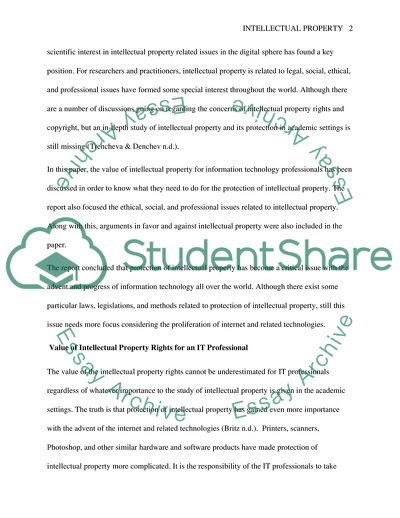Cite this document
(Social, Ethical, and Professional Aspects of Intellectual Property Coursework Example | Topics and Well Written Essays - 3500 words, n.d.)
Social, Ethical, and Professional Aspects of Intellectual Property Coursework Example | Topics and Well Written Essays - 3500 words. https://studentshare.org/information-technology/1812963-social-professional-and-ethical-issues-in-information-systems
Social, Ethical, and Professional Aspects of Intellectual Property Coursework Example | Topics and Well Written Essays - 3500 words. https://studentshare.org/information-technology/1812963-social-professional-and-ethical-issues-in-information-systems
(Social, Ethical, and Professional Aspects of Intellectual Property Coursework Example | Topics and Well Written Essays - 3500 Words)
Social, Ethical, and Professional Aspects of Intellectual Property Coursework Example | Topics and Well Written Essays - 3500 Words. https://studentshare.org/information-technology/1812963-social-professional-and-ethical-issues-in-information-systems.
Social, Ethical, and Professional Aspects of Intellectual Property Coursework Example | Topics and Well Written Essays - 3500 Words. https://studentshare.org/information-technology/1812963-social-professional-and-ethical-issues-in-information-systems.
“Social, Ethical, and Professional Aspects of Intellectual Property Coursework Example | Topics and Well Written Essays - 3500 Words”. https://studentshare.org/information-technology/1812963-social-professional-and-ethical-issues-in-information-systems.


